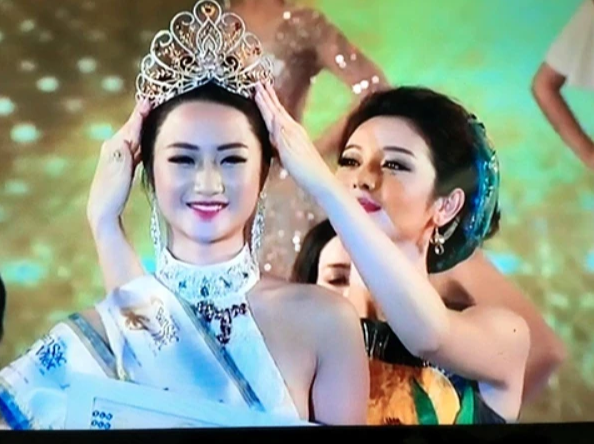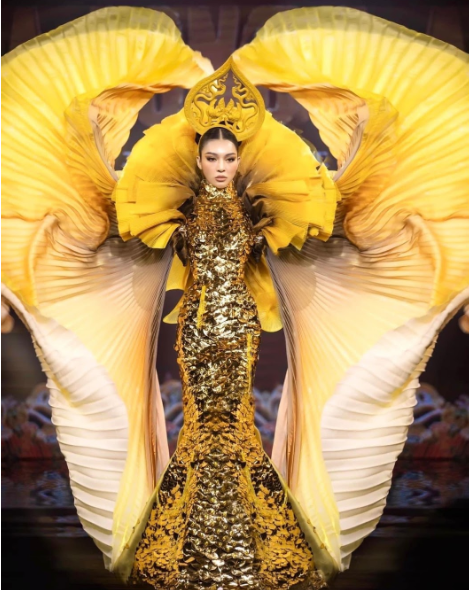The world of hip-hop has long been dominated by diverse voices, but the emergence of white female rappers has undeniably added a unique and powerful dimension to the genre. As we embark on this comprehensive exploration, it’s crucial to understand the evolution and significance of white women in rap. In a landscape where diversity is celebrated, the presence of these rhythm queens challenges stereotypes and contributes to the ever-expanding tapestry of hip-hop.
Defining White Female Rappers: White female rappers, a subset within the broader hip-hop community, are artists who, despite not fitting the traditional mold of the genre, have risen to prominence through their skillful lyricism and distinctive styles. This article will delve into the roots of white female rap, exploring how these artists have not only shattered preconceived notions but have also played pivotal roles in shaping the trajectory of the genre.
Pioneers Who Shattered Stereotypes
Blondie’s Debbie Harry: Breaking Ground in the ’80s
In the 1980s, amidst the emergence of hip-hop, Blondie’s lead vocalist, Debbie Harry, boldly stepped into the rap scene, challenging the prevailing norms. Blondie’s incorporation of rap elements in their music marked a groundbreaking moment, and Debbie Harry’s fearless approach paved the way for future generations of white female rappers. Her impact resonates as a testament to the genre’s ability to transcend racial and gender boundaries.
Influence on the ’80s Music Landscape: Debbie Harry’s foray into rap brought a fusion of punk, new wave, and hip-hop, demonstrating the genre’s ability to absorb diverse influences. As the frontwoman of Blondie, she showcased that rap wasn’t confined to a specific demographic, laying the foundation for subsequent white female artists to explore and contribute to the evolving hip-hop landscape.
MC Lyte: A Trailblazer for the Generation
Moving into the late ’80s and early ’90s, the hip-hop scene witnessed the rise of MC Lyte, a trailblazer whose impact extended beyond her gender or race. As one of the first prominent African American female rappers, MC Lyte’s collaboration with other artists and fearless exploration of societal issues set a precedent for white female rappers, inspiring them to use their platform not just for entertainment but also for social commentary.
Collaborative Efforts and Social Commentary: MC Lyte’s collaborations with artists like Queen Latifah showcased the potential for unity in the hip-hop community, regardless of race or gender. Her socially conscious lyrics addressed issues ranging from gender inequality to urban struggles, laying the groundwork for white female rappers to infuse their narratives with substance and purpose.
Queen Latifah: Royalty in the Rap Realm
Queen Latifah, often hailed as the “Queen of Hip-Hop,” emerged as a force to be reckoned with during the ’90s. Her multifaceted career spanned music, acting, and entrepreneurship, solidifying her status as an icon in the entertainment industry. Queen Latifah’s contributions to hip-hop transcended mere artistry; she became a symbol of empowerment for women of all backgrounds.
Beyond Rap: An Empowered Persona: Queen Latifah’s success expanded beyond the confines of the rap genre. Her transition into acting and business ventures showcased the potential for white female rappers to diversify their portfolios while maintaining a strong foothold in hip-hop. This era laid the groundwork for contemporary white female artists to pursue varied interests without compromising their roots.
Contemporary Icons Redefining the Game
Eminem’s Influence on White Female Rappers
The turn of the millennium marked a significant shift in the perception of white artists in hip-hop, largely attributed to the unparalleled success of Eminem. As a white male rapper, Eminem’s rise to dominance opened doors for white female artists, challenging the conventional belief that hip-hop was an exclusive domain for black artists.
Breaking Barriers and Opening Doors: Eminem’s success not only shattered racial barriers but also contributed to the acceptance of white artists in hip-hop. This shift in perception created an environment where white female rappers could emerge, confident in their ability to be embraced by the hip-hop community.
Iggy Azalea: The Australian Sensation
In the 2010s, Iggy Azalea, hailing from Australia, burst onto the hip-hop scene, bringing a fresh perspective and an unapologetic style. While her success was met with both acclaim and criticism, there’s no denying the impact she had on the genre, particularly in challenging traditional notions of what a rapper should look and sound like.
International Flavor and Controversies: Iggy Azalea’s international background introduced a new layer of diversity to the hip-hop landscape. However, her rise was not without controversies, including accusations of cultural appropriation. This section will delve into how Iggy navigated these challenges and the broader impact of her presence on the global hip-hop stage.
Kreayshawn: Crafting her Unique Niche
Kreayshawn, known for her viral hit “Gucci Gucci,” carved out a space for herself in the hip-hop scene with a distinctive style and irreverent attitude. As a white female rapper, her unapologetic approach to her craft challenged conventions and demonstrated the evolving nature of hip-hop as an inclusive and diverse genre.
The Rise of the DIY Artist: Kreayshawn’s success highlighted the changing dynamics of the music industry, especially with the rise of digital platforms. This section will explore how her journey as a DIY artist contributed to reshaping the traditional paths to success for white female rappers in the modern era.
Challenges and Triumphs
Navigating through Gender Bias
Despite the strides made by white female rappers, the industry still grapples with gender bias. This section will explore the challenges these artists face, including stereotypes and expectations that may differ from those placed on their male counterparts.
Addressing Double Standards: White female rappers often confront double standards that scrutinize their appearance, lyrics, and authenticity in ways male counterparts may not experience. This subsection will delve into the nuances of gender bias within the industry.
Addressing Cultural Appropriation Concerns
The intersection of race and hip-hop inevitably raises questions about cultural appropriation. This part of the article will examine how white female rappers navigate this complex terrain, exploring instances of appropriation, acknowledgment, and the ongoing conversation surrounding these issues.
Striking a Balance: White female rappers walk a fine line between appreciation and appropriation. By examining specific cases, this section aims to shed light on the complexities of cultural exchange within the hip-hop community.
Achievements and Recognition
White female rappers have achieved significant milestones, from topping charts to receiving industry accolades. This segment will showcase their accomplishments, highlighting the artists who have garnered widespread recognition for their contributions to the genre.
Breaking Records and Making History: Whether it’s Iggy Azalea’s chart-topping hits or collaborations with male counterparts, this section will spotlight the achievements that have solidified white female rappers as integral players in the hip-hop landscape.
The Feminine Narrative in White Female Rap
Lyrics as a Medium of Self-Expression
One of the defining features of white female rap is the diverse range of topics explored in their lyrics. This portion of the article will dissect how these artists use their words to convey personal experiences, societal observations, and messages of empowerment.
Beyond Stereotypes: Redefining Femininity in Lyrics: White female rappers challenge stereotypes associated with femininity, using their lyrics as a tool for self-expression and empowerment. By examining specific verses and songs, readers will gain insight into the multifaceted narratives woven into their rhymes.
Empowerment and Feminism in Rhymes
White female rappers often embrace feminist themes in their music, contributing to a broader dialogue on gender equality. This part of the article will explore how their lyrics serve as a vehicle for empowerment and advocacy within the hip-hop community.
From Lyrics to Activism: Beyond the stage, many white female rappers actively engage in feminist activism. This section will delve into their contributions, both within the music industry and in broader social and cultural contexts.
Challenges of Balancing Femininity and Rap Culture
The intersection of femininity and rap culture presents unique challenges for white female artists. This subsection will examine how they navigate societal expectations while maintaining authenticity within a genre historically associated with masculinity.
From Fashion to Flow: Balancing the expectations of femininity in appearance and demeanor while preserving the essence of hip-hop requires finesse. By exploring specific instances, this section will illuminate the complexities of this balancing act.
Style and Identity
Fashion Trends and Influence on Rap Culture
White female rappers have left an indelible mark on rap culture not only through their music but also through their distinctive fashion choices. This part of the article will explore how their styles have influenced the broader hip-hop fashion landscape.
Iconic Styles and Trendsetting: From Queen Latifah’s regal attire to Iggy Azalea’s bold fashion statements, white female rappers have significantly impacted the industry’s fashion trends. This section will showcase the evolution of their styles and their influence on mainstream fashion.
Hair and Makeup: A Statement in the Hip-Hop Scene
The visual identity of white female rappers extends beyond clothing, with hairstyles and makeup becoming integral components of their personas. This subsection will delve into the significance of their beauty choices in shaping their public image.
Beyond the Mic: Crafting a Visual Persona: White female rappers use their hair and makeup choices to communicate identity and assert individuality. Analyzing specific examples, this section will highlight the visual narratives created by these artists.
Shaping Personal Branding through Visuals
In the age of social media and visual storytelling, personal branding is paramount. This segment will explore how white female rappers leverage visuals to cultivate a unique brand identity that resonates with fans and shapes their public perception.
The Instagram Aesthetic: Curating Authenticity: From curated Instagram feeds to music videos, this section will delve into the intentional choices made by white female rappers to craft a visual narrative that aligns with their artistic vision and resonates with their audience.
Collaborations and Cross-Cultural Fusion
Collaborative Projects with Male Rappers
Collaborations between white female and male rappers have been instrumental in shaping the hip-hop landscape. This part of the article will showcase notable collaborations, examining how these partnerships contribute to the genre’s evolution.
Breaking Boundaries: Uniting Voices across Genders and Races: The collaborative efforts between white female and male rappers challenge traditional power dynamics, fostering a sense of unity within the hip-hop community. This section will analyze specific collaborations and their impact.
Influence of Different Music Genres on Collaborations
White female rappers often draw inspiration from various music genres, infusing their collaborations with a rich tapestry of sounds. This subsection will explore how these cross-genre influences contribute to the diversity of collaborations within the hip-hop realm.
Beyond Hip-Hop: Exploring Musical Hybridity: By examining specific collaborations that transcend traditional hip-hop boundaries, this section will illustrate how white female rappers contribute to the genre’s evolution by embracing a variety of musical influences.
Impact on Global Hip-Hop Fusion
The globalization of music has led to an exciting fusion of sounds from around the world. This part of the article will investigate how white female rappers contribute to the global exchange of hip-hop, bringing diverse influences to the forefront.
From Local Scenes to Global Stages: Through collaborations and cross-cultural influences, white female rappers play a crucial role in expanding hip-hop’s reach beyond geographical and cultural boundaries. This section will explore the impact of their contributions on the global hip-hop scene.
The Role of Social Media
Rise to Stardom through Platforms like TikTok
The advent of social media has transformed the music industry, providing artists with unprecedented opportunities for visibility and discovery. This segment will explore how white female rappers leverage platforms like TikTok to connect with audiences and propel their careers to new heights.
Viral Sensations and Trendsetting: Through case studies and examples, this section will illustrate how white female rappers strategically use TikTok and other social media platforms to create viral moments, turning their music into cultural phenomena.
Building Fan Communities on Instagram and Twitter
In the era of connectivity, building and maintaining fan communities is essential for sustained success. This part of the article will delve into how white female rappers cultivate engaged fanbases through platforms like Instagram and Twitter.
Engagement Strategies and Fan Interaction: Examining specific tactics employed by artists, this section will provide insights into the strategies white female rappers use to connect with fans on a personal level, fostering loyalty and support.
Addressing Challenges and Harassment Online
While social media provides a platform for connection, it also exposes artists to potential challenges and online harassment. This subsection will explore how white female rappers navigate the darker side of social media and respond to adversity.
From Trolls to Triumphs: Managing Online Presence: Through real-life stories and examples, this section will shed light on the resilience of white female rappers in the face of online challenges, emphasizing their ability to turn adversity into triumph.
Criticism and Controversies
Navigating through Accusations of Cultural Appropriation
The intersection of race and hip-hop inevitably raises questions about cultural appropriation. This part of the article will examine how white female rappers navigate this complex terrain, exploring instances of appropriation, acknowledgment, and the ongoing conversation surrounding these issues.
Striking a Balance: White female rappers walk a fine line between appreciation and appropriation. By examining specific cases, this section will shed light on the complexities of cultural exchange within the hip-hop community.
Responses to Backlash and Public Scrutiny
Public scrutiny is an inherent part of the entertainment industry, and white female rappers are no strangers to criticism. This subsection will explore how artists respond to backlash, showcasing resilience and adaptability in the face of adversity.
From Controversy to Comeback: By examining specific incidents and responses, this section will highlight how white female rappers navigate controversies, demonstrating their ability to evolve and emerge stronger from challenging situations.
Impact on Career Trajectory
Criticism and controversies can significantly impact an artist’s career trajectory. This part of the article will examine how instances of backlash and public scrutiny have shaped the paths of white female rappers, both positively and negatively.
Turning Challenges into Opportunities: By analyzing case studies, this section will illustrate how white female rappers use adversity as a catalyst for growth, turning challenges into opportunities for personal and artistic development.
Success Stories and Chart-Topping Hits
Notable Achievements on Billboard and Other Charts
White female rappers have consistently made their mark on music charts, achieving significant milestones that contribute to the genre’s diversity. This segment will showcase specific artists and their chart-topping hits, underscoring their impact on the industry.
Beyond the Glass Ceiling: Breaking Chart Records: Through a detailed analysis of chart performances, this section will highlight the artists who have shattered glass ceilings, paving the way for future white female rappers to achieve unprecedented success.
Impact on Music Sales and Streaming Platforms
In an era dominated by digital platforms, white female rappers have harnessed the power of streaming to reach global audiences. This part of the article will explore how their presence on streaming platforms has influenced music consumption trends.
Streaming Success and Digital Dominance: By examining specific data and trends, this section will illustrate the correlation between the rise of white female rappers and shifts in music sales and streaming numbers, showcasing their influence on industry dynamics.
Recognition in Award Shows
Awards and accolades are symbolic of an artist’s impact on the industry. This subsection will delve into how white female rappers have been recognized in prestigious award shows, emphasizing the diversity and inclusivity of these platforms.
From Nominations to Victories: Celebrating Excellence: Through case studies and memorable moments, this section will highlight instances where white female rappers received acclaim and recognition on major award stages, solidifying their status as integral contributors to the genre.
Inspirations and Influences
Exploring Inspirations Beyond Hip-Hop
White female rappers draw inspiration from a myriad of sources beyond the confines of hip-hop. This part of the article will delve into the diverse influences that shape their artistic expression, from rock and pop to classical and beyond.
Eclectic Influences: Beyond the Beat of Hip-Hop: By examining specific artists and their musical influences, this section will showcase the eclectic tastes and diverse inspirations that contribute to the rich tapestry of white female rap.
How Personal Stories Shape Artistic Expression
The personal narratives of white female rappers play a significant role in shaping their artistic expression. This subsection will explore how their stories, struggles, and triumphs infuse authenticity into their music, creating a powerful connection with listeners.
From the Heart to the Mic: Personal Stories in Rhymes: Through lyrical analysis and personal anecdotes, this section will illuminate how white female rappers transform their lived experiences into resonant art, creating a bridge between their individual journeys and the broader hip-hop narrative.
Paying Homage to Influential Figures
Acknowledging the roots of hip-hop is integral to its evolution. This segment will highlight instances where white female rappers pay homage to influential figures within the genre, fostering a sense of continuity and respect for the pioneers who paved the way.
Respecting the Foundations: A Nod to Hip-Hop Legends: Through examples and testimonials, this section will emphasize how white female rappers honor the legacy of hip-hop, demonstrating a profound appreciation for the genre’s pioneers and influencers.
The Future of White Female Rappers
Emerging Talents and Rising Stars
As we look to the future, this section will shine a spotlight on emerging white female talents, exploring their unique styles, perspectives, and contributions to the evolving landscape of hip-hop.
The Next Wave: Rising Stars Redefining the Norms: Through interviews, industry insights, and musical analysis, this section will introduce readers to the promising talents poised to shape the future of white female rap, providing a glimpse into the next generation of rhythm queens.
Trends in Sound and Style
The ever-changing nature of music demands an exploration of emerging trends. This part of the article will delve into the evolving sounds and styles within white female rap, predicting potential shifts and innovations on the horizon.
Soundscapes of Tomorrow: Predicting Evolution in Style and Sound: By analyzing recent releases and industry developments, this section will offer a forecast of the trends that may define the future of white female rap, reflecting the genre’s capacity for reinvention.
Potential Shifts in Industry Dynamics
The trajectory of white female rappers is intertwined with broader shifts in the music industry. This subsection will examine potential changes in industry dynamics, from representation and diversity initiatives to evolving audience preferences.
Beyond the Mic: Industry Impact and Societal Shifts: By considering socio-cultural factors and industry trends, this section will discuss how the presence of white female rappers may contribute to broader changes in the music landscape, addressing the evolving expectations of both artists and audiences.
Supporting Diversity in Rap
Promoting Inclusivity and Breaking Stereotypes
White female rappers play a crucial role in promoting inclusivity within hip-hop. This segment will explore their efforts to break stereotypes and foster an environment where artists from diverse backgrounds can thrive.
Breaking Down Barriers: Advocacy for Inclusivity and Diversity: Through interviews and initiatives, this section will showcase how white female rappers actively contribute to dismantling stereotypes, advocating for inclusivity, and fostering a more diverse hip-hop community.
Collaborative Efforts to Showcase Diversity
Collaborations between artists of different backgrounds contribute to the rich tapestry of hip-hop. This part of the article will explore how white female rappers actively engage in collaborative projects that showcase diversity within the genre.
Unity in Diversity: The Power of Collaborations: By highlighting specific collaborations and initiatives, this section will underscore the importance of unity and collaboration in hip-hop, showcasing how diverse voices can come together to create impactful and resonant music.
Mentorship and Opportunities for New Talent
As established figures in the industry, white female rappers have the power to uplift and mentor new talent. This subsection will delve into their mentorship initiatives and efforts to provide opportunities for aspiring artists.
Passing the Mic: Mentorship and the Future of White Female Rap: Through case studies and testimonials, this section will showcase instances where white female rappers actively contribute to the development of new talent, ensuring a vibrant and diverse future for the genre.
Conclusion
As we conclude this comprehensive exploration of white female rappers, it’s evident that these rhythm queens have not only carved out a space for themselves within hip-hop but have also enriched the genre with their diverse voices, unique perspectives, and unapologetic authenticity. From the pioneers who shattered stereotypes to the contemporary icons redefining the game, each artist has played a crucial role in shaping the trajectory of white female rap.
Looking back on the evolution of white female rappers, it’s clear that their journey is intertwined with the broader narrative of hip-hop’s growth and transformation. From overcoming gender bias to addressing cultural appropriation concerns, these artists have navigated challenges with resilience and creativity, leaving an indelible mark on the industry.
As we look to the future, the emerging talents and rising stars within white female rap signal a continued evolution of the genre. With an unwavering commitment to promoting inclusivity, breaking stereotypes, and fostering diversity, white female rappers are poised to play a pivotal role in shaping the next chapters of hip-hop.
In the dynamic world of music, where sounds and styles are in a constant state of flux, white female rappers stand as beacons of innovation, embracing the ever-changing landscape with open arms. As we celebrate their achievements, acknowledge their challenges, and anticipate the future they are helping to shape, one thing is certain – the rhythm queens of hip-hop are here to stay.
Frequently Asked Questions (FAQs)
How has the perception of white female rappers evolved over the years?
The perception of white female rappers has undergone a significant transformation over the years, evolving from initial skepticism to widespread acceptance within the hip-hop community. In the early days, there were often doubts about their authenticity and ability to navigate a genre historically rooted in African American culture. However, with the rise of pioneers like Debbie Harry, MC Lyte, and Queen Latifah, white female rappers began to break down these barriers. The influence of Eminem further shifted perceptions, opening doors for white artists in hip-hop. Today, white female rappers are celebrated for their contributions, and the evolving narrative reflects a more inclusive and diverse hip-hop landscape.
Are there notable examples of successful collaborations between white female rappers and male counterparts?
Absolutely. Collaborations between white female rappers and their male counterparts have not only been successful but have also played a crucial role in shaping the hip-hop landscape. For instance, MC Lyte’s collaborations with male artists during the ’80s set a precedent for unity within the genre. Eminem’s influence has paved the way for collaborations with white female artists, breaking down racial and gender barriers. These partnerships transcend traditional power dynamics and contribute to the genre’s evolution, highlighting the collaborative spirit that defines hip-hop.
How do white female rappers address issues of cultural appropriation in their music?
Addressing issues of cultural appropriation is a complex and nuanced aspect of white female rap. While some artists have faced accusations of appropriating elements of hip-hop culture, others actively engage in conversations about the importance of acknowledging and respecting the genre’s roots. Through their lyrics, interviews, and social media presence, white female rappers navigate this terrain by striking a balance between appreciation and cultural sensitivity. Some artists use their platform to raise awareness about the significance of cultural exchange while respecting the origins of hip-hop.
What role does social media play in the success of white female rappers?
Social media plays a pivotal role in the success of white female rappers, providing a platform for visibility, engagement, and the cultivation of fan communities. Platforms like TikTok have been instrumental in propelling songs to viral status, creating cultural phenomena. Instagram and Twitter allow artists to connect directly with fans, showcase their personalities, and build a loyal following. However, social media also exposes artists to challenges, including online harassment. Navigating these platforms strategically and authentically is crucial for white female rappers in maintaining their success in the digital age.
How have fashion and style contributed to the identity of white female rappers?
Fashion and style are integral components of the identity of white female rappers, contributing to their visual personas and influencing the broader hip-hop fashion landscape. From Debbie Harry’s eclectic ’80s punk style to Iggy Azalea’s bold and glamorous aesthetic, white female rappers have left an indelible mark on fashion trends. Their choices in clothing, hairstyles, and makeup communicate individuality and authenticity. The evolving styles of these artists reflect not only personal expression but also broader societal shifts, challenging traditional norms and contributing to the diversity of representations within hip-hop.
What challenges do white female rappers face in the industry, and how do they overcome them?
White female rappers face a range of challenges in the industry, including gender bias, stereotypes, and scrutiny over their authenticity. They often navigate double standards that place additional scrutiny on their appearance and lyrics. Overcoming these challenges requires resilience, creativity, and a commitment to authenticity. Many white female rappers address these issues head-on, using their music and public platforms to challenge stereotypes and advocate for inclusivity. Collaborations, both with male counterparts and artists from diverse backgrounds, contribute to breaking down barriers and reshaping industry dynamics. Ultimately, their ability to overcome challenges lies in their determination to carve out space for themselves within the hip-hop landscape.










